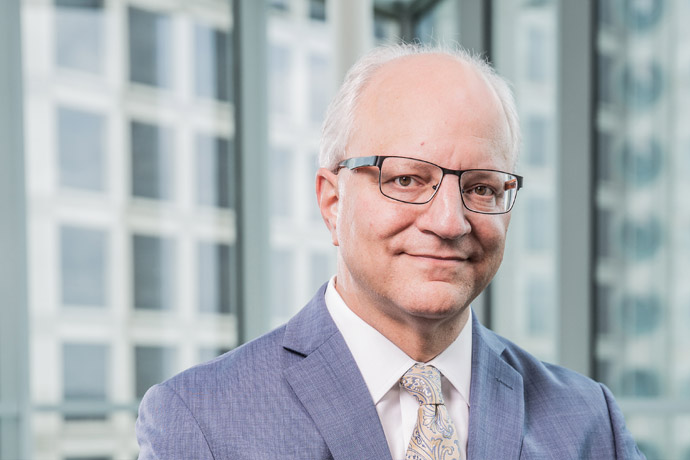A Next Step in the Evolution of Brain Science at UT Southwestern
In 2019, Dr. William T. Dauer joined the UT Southwestern faculty as the inaugural Director of the O’Donnell Brain Institute (OBI) with a bold vision. His plan was to lead the institution into the future of brain science through three major pillars: building the science; translating that science into patient care; and bringing it in the most efficient way to patients in multidisciplinary care settings. Dr. Dauer believes the time is right for bringing such a transformative vision to life at UT Southwestern by maximizing the resources of the Human Genome Project and the Human Connectome Project.

“We are at a point now in the evolution of brain science where we are reaping the benefits of several decades of investment.”
Dr. William T. Dauer
Tapping Into the Human Connectome Project
The Human Connectome Project is an ambitious effort for the U.S. scientific field to develop and share information through the Connectome Coordination Facility, which maintains a central data repository for public research data. The facility accelerates research and offers advice to the research community regarding data collection strategies and harmonization. By understanding wiring patterns in the brain within and across individuals, researchers will be able to decipher the electrical signals that generate human thoughts, feelings, and behaviors. The connectome will also enable researchers to explore how genes influence the brain’s connections.
“If we think of the brain as a circuit board, we understand how all those parts are laid out and how the information is processed, which allows the human body to think and move in the ways that it does,” said Dr. Dauer. “Thanks to advances in technology, we can change people’s lives by altering the electrical flow of the messages in the brain, which is truly remarkable. This is just the tip of the iceberg. We are reaching a level of understanding that we could not have imagined just 10 years ago.”
Brain mapping gives scientists a greater understanding of the roots of human neurological disorders including schizophrenia, autism spectrum disorders, and other conditions that may arise from abnormal “wiring” during brain development. This knowledge should lead to better ways to detect, treat, and prevent devastating brain disorders that rob people of their lives.
“It is enormously exciting, as a scientist and as a physician, to be in an environment that allows such innovation.”
Dr. William T. Dauer
Much remains to be discovered about the brain for scientists to understand how the human mind works. The brain controls nearly every aspect of the body, ranging from physiological functions to cognitive abilities, and functions by sending and receiving signals via neurons to different parts of the body. According to many estimates, the brain contains nearly 100 billion neurons that fire in continuous patterns of activity. At UT Southwestern, it is the culmination of years of innovation that allows scientists to understand the workings of the brain and gives them the ability to manipulate it.
“Innovation is a critical part of the OBI vision, as well as developing those ideas that are off the cutting edge, including novel ways to change the brain and novel ways to manipulate genes,” said Dr. Dauer.
Dr. Dauer’s Personal Passion for Treating Brain Illness
Hear more from Dr. Dauer during The Heritage Society’s 25th Anniversary virtual celebration, where he shares his personal story behind his passion for driving a deeper understanding of brain illnesses and providing empathetic care to patients.